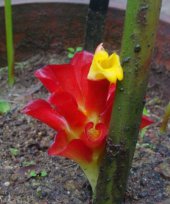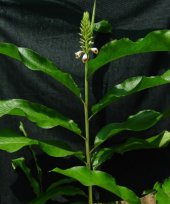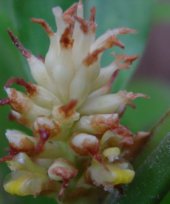|
FURTHER STUDIES ON INDIAN ZINGIBERACEAE
Funded by: Department of Science and Technology,
New Delhi, Govt. of India.
| Principal Investigator |
Dr. M .SABU
Reader
Department of Botany
University of Calicut
|
| Co-Investigator |
Dr. A.K. Pradeep
Herbarium Curator
Department of Botany
University of Calicut
|
| Project Staffs |
Sanoj. E (JRF)
Mohammed Shameer Cheriyath (RA)
Department of Botany
University of Calicut
|
| Duration |
21.11.2006 to 20.11.2009 ( 3 years)
|
| Study Area |
Through out India including Andaman & Nicobar Islands.
|
Approved Objectives of the project
-
Establishment of Zingiberatum as a part of IBGN.
-
Development of a computer based key for the identification of Zingiber group.
-
Augmenting Indian database (IBIN) with Indian Zingiberaceae.
-
Digitalizing the herbarium specimens of Indian Zingiberaceae.
-
Exhaustive collection of ginger specimens throughout India, especially North-East India, Andaman & Nicobar Islands and Peninsular India.
-
Detailed taxonomic and Nomenclatural studies of the collected specimens.
-
Preparation of ginger album containing colour photographs of the collected taxa.
-
Data base preparation of Zingiberaceae with the help of a software prepared.
-
Digitalization of various herbaria using imaging equipments and the preparation of Digital herbarium.
-
Establishment of live Gene Bank of Indian gingers in the Calicut University Botanical Garden (CUBG).
-
Preparation of herbarium specimens.
-
Identification of RET plants for appropriate conservation measures.
-
Typification of many Indian taxa.
Salient Research Achievements
The family Zingiberaceae, are one among the ten largest monocotyledonous families in Indian subcontinent. It is represented by 19 genera and about 180 species in India. They are one of the most difficult family to work with the herbarium specimens. It has been considered as a neglected group mainly because of the inaccessible nature of the habitats, the wet evergreen forest in which they grow, the short flowering period coinciding with the monsoon worses the situation. As live specimens are essential for the further studies of Indian Zingiberaceae, many adventurous explorations are made in the evergreen forests of India, especially in Northeastern states viz., Assam, Meghalaya, Nagaland, Arunachal Pradesh, Sikkim, Manipur, Mizoram, Tripura, and Andaman Nicobar Islands. The collections are made for both herbarium preparation and for the propagation in the Calicut University Botanical Garden (CUBG) for the establishment of a Ginger germplasm. The specimens for the herbarium were processed by the wet method and mounted on the herbarium sheets and are deposited in the Calicut University Herbarium (CALI). Proper identification of the specimens were made with the help of all available literature and experts in the field of Royal Botanical Garden, Edinburgh, Smithsonian Institute, USA, FRIM, Malaysia, Aarhus University, Denmark etc.
Germplasm of Indian Gingers in CUBG holds the largest collection of gingers in India with about 18 genera and 156 species in 1698 accessions. For the preparation of Digital Herbaria, digitalization works of major herbaria like CALI, ASAAM, BSHC, PBL etc. are completed, All relevant data of the specimens were stored in the computer as apart of the database preparation and ginger album. Revisionary works of the genera like Globba L. Alpinia Roxb. etc were completed. Revisionary works of Amomum Roxb., Boesenbergia O. Kuntze, Cautleya Royle, Hedychium Koenig etc. are in progress. During this project two Indian generic records (Plagiostachys Ridl. And Stahlianthus (King ex Baker) R. M. Sm.), one new species (Plagiostachys nicobarica M. Sabu et al.) and one India species record (Alpinia ovoidocarpa H. Dong & G. J. Xu) were published in international journals.
POTENTIAL ORNAMENTAL GINGERS: DOMESTICATION, IMPROVEMENT AND DEVELOPMENT OF AGRO-TECHNIQUES
Funded by: Department of Biotechnology,
New Delhi, Govt. of India.
India is blessed with the rich diversity of gingers, with about 20 genera and 200 species. Apart from their traditional uses, the members of the family have been gained considerable attention by the horticulturists all over the world. However, the ornamental potential of many Indian members are yet to be exploited. With this objective, we have selected 10 species with high ornamental value for the domestication programme.
| Principal Investigator |
Dr. M .SABU
Reader
Department of Botany
University of Calicut
|
| Co-Investigatorr |
Dr. K. V. Mohanan
Reader
Department of Botany
University of Calicut
|
| Co-Investigatorr |
Dr. Sailas Benjamin
Reader
Department of Botany
University of Calicut
|
| Project Staffs |
Thomas V. P. (JRF)
Prasanth A. V. (JRF)
Prabhu KUmar K. M. (RA)
Department of Botany
University of Calicut
|
| Duration |
19.09.2006 to 18.09.2009 ( 3 years)
|
| Study Area |
Through out India including Andaman & Nicobar Islands.
|
Major Objectives of the project
-
Collection, habitat study, taxonomy and conservation of ornamental gingers.
-
Screening, domestication and development of appropriate agro-techniques.
-
Improvement of ornamental value.
-
Development and standardization of appropriate techniques for the effective propagation and exchange of materials.
Taxa selected for the present study
Salient Research Achievements
As the part of this research project a Ginger Villa was constructed in the Calicut University Botanic Garden. It harbors many indigenous and exotic collections from various neighboring countries like Sri Lanka, Malesia, Thailand, Bangladesh, china, etc. Intensive collections of targeted taxa were made throughout India right from the beginning of the project. The project team visited various localities of Kerala, Tamil Nadu, Karnataka, Andhra Pradesh, Goa, Maharashtra, Assam, Sikkim, Meghalaya, Nagaland, Mizoram and Andaman-Nicobar Islands. The collected plants from different regions of India were planted in Calicut University Botanic Garden following the standard procedures. All the relevant passport data were recorded and separate accession numbers were given. The accessions were labelled with standard T- labels. All the selected taxa including variants are conserved in the Calicut University Botanic Garden (1125 plants). The elite variants screened were conserved in separate plots for future studies.
At the time of collection following parameters such as nature of the soil, altitude, longitude and latitude of the place, climate, rainfall, distribution of species, abundance, associated species etc. were noticed. The soil samples collected from various habitats were subjected to soil analysis for the detection of elements such as organic Carbon, Phosphorous and Potassium. Other parameters like pH and TSS were also analyzed. Taxonomic studies on selected taxa were carried out. Specimens collected were preserved in wet method after entering the field observations. The specimens were pressed and prepared for the future reference. Vaselife of cut flowers of different species of gingers were observed and studied.
As the part of this project we have developed a vegetative propagation technique for Hitchenia careyana through stem cuttings. Single nodded stem cuttings 6-8 cm long were collected from healthy tillers of Hitchenia after removing leaves and sheaths. The cuttings were planted horizontally in trays filled with river sand and irrigated regularly to keep moisture. The cuttings started sprouting after 25 days and produced roots after 30 days. These plants were transplanted to potting mixture containing soil, sand and cow-dung in 1:1:1 ratio. Multiplication with stem cuttings in the family Zingiberaceae is reported for the first time.
Mutation studies using Physical and chemical mutagens were carried out for variability. The physical agents like Gamma and UV irradiations at different rates of exposure and time were tried. The chemical mutagens like Ethane Methyl Sulphonate, Acridine and Colchine were also used.
Variability studies in selected species have been carried out for the screening of elite genotypes. Under the study both vegetative and reproductive characters like plant height, leaf size, nature, length of the inflorescence, number of flowers per inflorescence, colour of coma bracts, standing duration of spike, etc. were included. The plants have been laid out in CRD in earthen pots of appropriate diameter and grown in soil 1: Sand 1: farm yard manure 1 under net house condition with 50 % shade. Each accession has been replicated 10 –12 times and the plants are being observed regularly.
Ginger Villa Inauguration
DNA BARCODING OF SELECTED SPECIES OF ZINGIBERACEAE : ALPINIA, GLOBBA AND ZINGIBER
Funded by: Department of Biotechnology,
New Delhi, Govt. of India.
| Principal Investigator |
Dr. M .SABU
Reader
Department of Botany
University of Calicut
|
| Co-Investigatorr |
Dr. A.K. Pradeep
Herbarium Curator
Department of Botany
University of Calicut
|
| Project Staff |
Rajesh Kumar T. (JRF)
Department of Botany
University of Calicut
|
| Duration |
19.01.2007 to 18.01.2010 ( 3 years)
|
| Study Area |
Through out India including Andaman & Nicobar Islands.
|
Salient Research Achievements
DNA barcoding, the newly emerged species identification system based on the nucleotide sequences of a standardized locus holds great hope in accurate species identification. Species identification in Zingiberaceae family is difficult mainly due to the short seasonal flowering of its species and the close vegetative resemblance of even distantly related species, thus a DNA base identification tool is extremely useful in this family.
This is the collaborative research project with RGCB ( Rajiv Gandhi Center for Biotechnology), A total of 26 species belonging to A,lpinia (10), Globba (5) and Zingiber (11) were identified for the present study. Atleast 5-10 accessions of each species were collected from their natural habitats. Leaf tissues from the accessions were transported to RGCB for analysis. The barcoding of 164 accessions belonging to 24 species were done so far.
Taxonomic Revision on Indian Marantaceae and Musaceae
Funded by: Department of Science and Technology,
New Delhi, Govt. of India.
| Principal Investigator |
Dr. M .SABU
Professor
Department of Botany
University of Calicut |
| Co-Investigator |
Dr. A.K. Pradeep
Assistant Professor
Department of Botany
University of Calicut |
| Project Staffs |
Alfred Joe (JRF)
Sreejith P.E. (JRF)
Department of Botany
University of Calicut |
| Duration |
01.10.2010 to 31.03.2014 ( 3 years 6 months)
|
| Study Area |
Through out India including Andaman & Nicobar Islands.
|
Approved Objectives of the project
- To undertake a revision of Indian Marantaceae and Musaceae and solve taxonomic and nomenclatural problems.
- To establish a Database of these families with the help of a Computer.
- To establish a live gene-bank of the members of the families in the University Botanical Garden as an aid for further research.
- Preparation of herbarium specimens of all collected taxa for future reference.
- Identification of threatened and endangered species of the area and their habitat requirements.
- Typification of many taxa described from India.
Salient Research Achievements
The Marantaceae and Musaceae are some of the most difficult families to work with the herbarium specimens. These families have been neglected since long mainly because of the inaccessible nature of the habitats such as the wet evergreen forests in which they grow and also because of the bulky nature for processing. As live specimens are essential for studies of Indian Marantaceae and Musaceae, many adventurous explorations were made in the evergreen forests of India for the collection of Marantas and Wild bananas. Therefore, Principal Investigator, Co-Investigator and Research Fellows spent about four months every year for the last three years in the field mainly at North-Eastern States (Arunachal Pradesh, Assam, Manipur, Meghalaya, Mizoram, Nagaland and Tripura), Orissa, Chattisgarh, West Bengal, Sikkim, Maharashtra, and South Indian States. They also visited various major herbaria in India for herbarium consultation and literature reference. During the collection we could collect all the seven genera and 11 species of Marantaceae reported from India. In Musaceae, 28 taxa under two genera were collected which includes 5 new taxa described during this work. This will come about 78% of the total taxa of Musaceae in India. All the collected taxa were introduced in the live gene bank of Calicut University Botanical Garden (CUBG). Nearly 80% of them are coming up well.
This germplasm consists of wild relatives of ‘Arrow Root’ and Bananas and it can be used for the production of new, high yielding and disease resistant varieties. Some of the members of the family are potential source of various medicines. The live collection in the CUBG of Marantaceae and Musaceae forms the largest collection of wild bananas and Marantas in India with authentic identification. The ethno botanical knowledge gathered from local people of some taxa can be used for the development of new drugs through the biochemical and pharmacognostic studies. Since majority of the species are collected in CUBG gene bank it will be made available to various research institutions like, Indian Institute of Horticultural research, Bangalore; Rajiv Gandhi Centre for Biotechnology, Trivandrum; National Bureau of Plant Genetic Resources, Thrissur; Banana Research Station, Kannara; National Research Centre for Banana, Tiruchirapally; National Agri-Food Biotechnology Institute (NABI), New Delhi, etc. for further research.
Collections were made for both live gene bank as well as for herbarium. Four to six sets of each taxon were collected for making herbaria. A total of about 500 sheets were prepared for further references. The herbarium was prepared using wet method and is mounted on hand made mount boards with proper labels.
Conservation statuses of all taxa were evaluated using IUCN (2011) criteria. 17 taxa are facing serious threats and coming under Critically Endangered Category. Two species are found to be Extinct in the Wild. 26 taxa are coming under Least Concern Category, but continuous destruction of forest may cause these taxa becoming threatened in coming future. Nomenclatural problems of several taxa were resolved and typification was done for Phrynium nicobaricum.A Database of Indian Marantaceae and Musaceae were developed. The Database includes data such as valid name with author citation, synonyms, descriptions, collection number, locality, flowering period, color photos, collectors name etc.
During the project period we could describe and publish three new species of genus Musa, one from Andaman and Nicobar Islands, Arunachal Pradesh and Meghalaya viz., M. sabuana Prasad et al., M. arunachalensis A.Joe et al. and M. cylindrica A.Joe et al. respectively. Besides this, one subspecies and two variety were also described and published in refereed journal. We recorded three species from India for the first time and rediscovered six species after a lapse of about a century.
Pollination Ecology of Selected Taxa of South Indian Zingiberaceae
Funded by KSCSTE
|
Principal Investigator
|
Dr. M .SABU
Professor
Department of Botany
University of Calicut
|
|
Co-Investigator
|
Dr. A.K. PRADEEP
Assistant Professor
Department of Botany
University of Calicut
|
|
Project Staffs
|
ASWANI, K. (JRF)
&
SMISHA, K.P. (JRF)
Department of Botany
University of Calicut
|
|
Duration
|
05.12.2015 to 04.12.2018 (3 years)
|
|
Study Area
|
Through out South India
|
Major Objectives of the project
To study the floral phenology.
To evaluate pollen viability and stigma receptivity.
To identify the main pollinators of selected taxa.
To determine the foraging nature of flower visitors, pollinators’ behaviour and pollination mechanism.
To understand the barriers of fruit set in taxa under study.
To determine how pollution and invasive species affect plant-pollinator interaction.
|


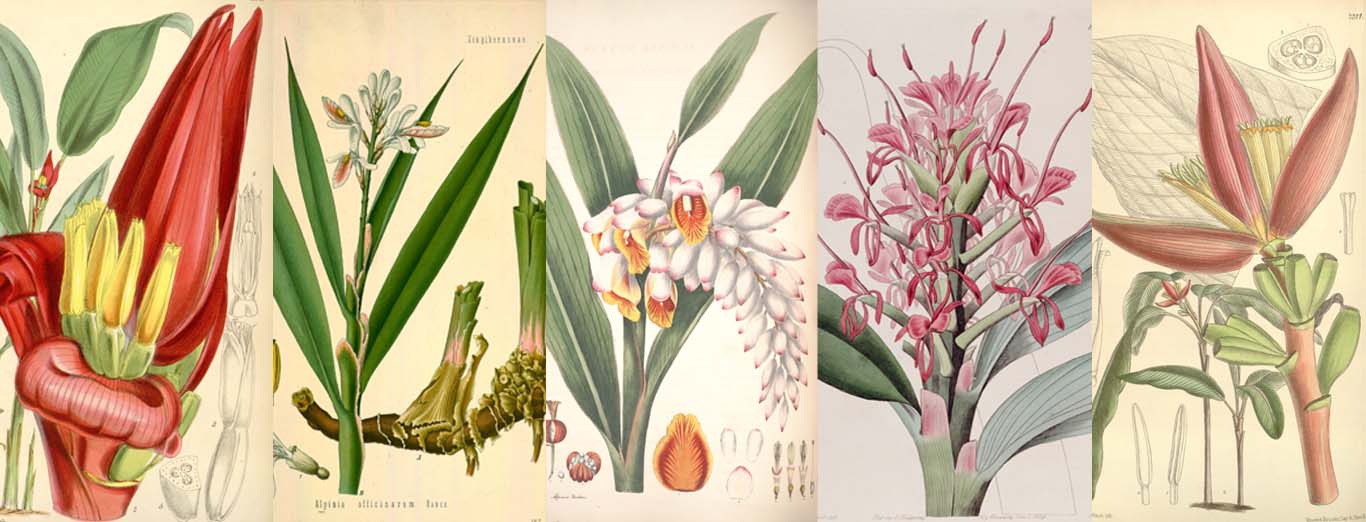

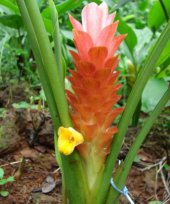
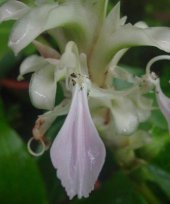
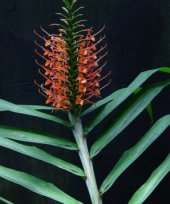
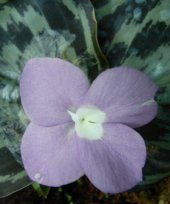
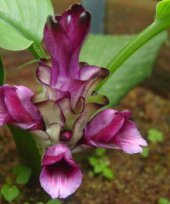

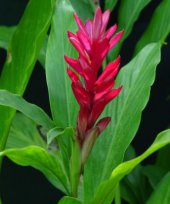
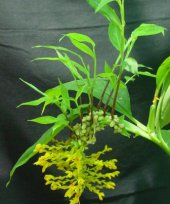
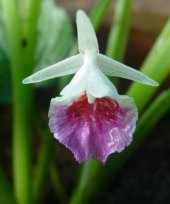








 News & Events
News & Events


